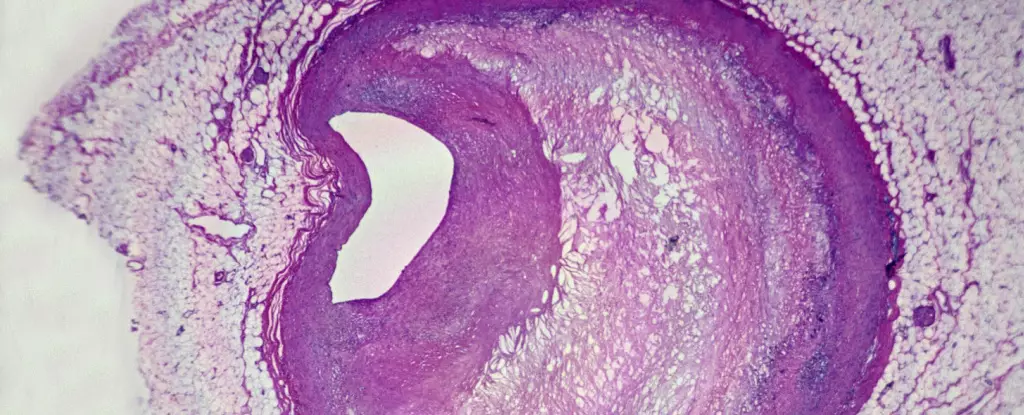In an era defined by excess plastic use, the emergence of microplastics and nanoplastics has escalated to alarming levels, infiltrating even the most unexpected recesses of the human body. These minuscule fragments of plastic have been discovered in various organs, including the lungs and liver, leading many to question the unseen repercussions on our health. Recent studies, including a revealing investigation led by Dr. Ross Clark from the University of New Mexico, have uncovered a potential link between these pervasive plastics and an increased risk of serious cardiovascular events such as heart attacks and strokes.
Dr. Clark’s study, presented at a recent American Heart Association meeting, shed light on the presence of microplastics in arterial plaque, raising significant concerns about their biological implications. The startling discovery that unhealthy arterial plaque contained 51 times more plastic than that found in normal arteries could indicate a toxic relationship between these synthetics and our cardiovascular health.
Plausible Mechanisms: How Microplastics Might Influence Heart Conditions
The relationship between microplastics and cardiovascular ailments is still being unraveled, leaving many questions in its wake. The evidence is suggestive but not definitive; Dr. Clark’s team, which analyzed samples from 48 individuals, observed that higher concentrations of microplastics correlated with distinct gene activity within the plaque. Specifically, in samples showing elevated levels of plastic, immune cells demonstrated altered gene expression linked to inflammation—a known contributor to heart disease.
This nuance could suggest that microplastics not only coexist within bodily systems but may actively participate in unhealthy biochemical processes. However, the direct causation remains a mystery, necessitating further exploration into whether microplastics merely correlate with health problems or play a crucial role in causing them. Neuroscientist Jaime Ross, while not directly involved in the study, underscores that the shocking disparity in plastic levels presents a narrative worth investigating, amplifying the call for deeper inquiry into microplastic interactions.
The Methodology and Its Implications
Clark’s methodology involved heating plaque samples to temperatures exceeding 1,000 degrees Fahrenheit, a meticulous process to ensure accurate measurement of the identified plastic components. However, as with any emerging field of research, limitations abounded. The breakdown of plaque lipids could produce misleading results, simulating the appearance of plastics like polyethylene—compounding the complexity in confirming precise findings.
Acknowledging these hurdles, Clark admits that while the methodology has limitations, it assembles a compelling case for further investigation. The endeavor of tracking microplastics within the human body is indeed a nascent field, suggesting that researchers are only beginning to unravel the maze of health implications associated with plastic pollution. Despite its imperfections, this initial foray lays vital groundwork for subsequent studies that could illuminate the connections between environmental toxins and chronic diseases.
Funding the Future: A Call to Action
Dr. Clark’s aspirations extend beyond his current findings; he actively seeks funding to explore microplastic interactions with immune cells within the vascular system and is eager to broaden his investigations into other arteries. This appeal for funding represents a critical juncture—not just for Clark’s work but also for our collective understanding of how environmental factors can disrupt human health.
Given the ubiquitous nature of plastics today, there is an urgent need for more robust funding to pursue these groundbreaking studies. The stakes are high; if microplastics are indeed contributors to cardiovascular disease, then understanding their mechanisms could enable the development of strategies to mitigate these risks and protect public health.
A Proactive Approach to Environmental Health
As society progresses into an increasingly plastic-dependent future, the revelations surrounding microplastics beckon a powerful response from the scientific community and policymakers alike. Awareness is crucial; public health campaigns must educate individuals about the potential consequences of plastic pollution and advocate for measures to limit exposure. Additionally, regulatory frameworks need to evolve alongside scientific findings to curtail plastic usage on a broader scale.
By confronting the plastic crisis head-on and prioritizing research into its health impacts, we stand a chance to unravel the layers of plastic’s influence on our well-being. While we may still reside in the dark about the full extent of microplastics’ effects, a concerted effort towards understanding these dangers could pave the way for healthier futures—essentially aiming to disarm the silent threat lurking within our bodies.

